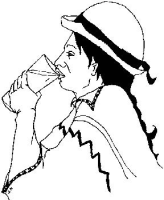Introduction
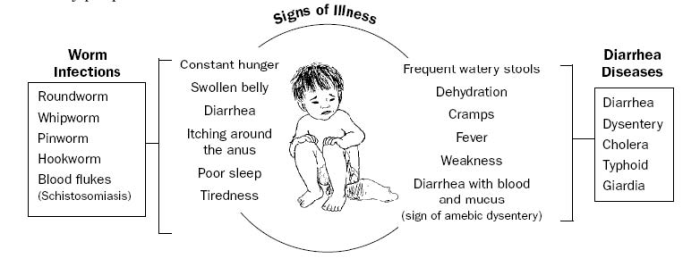 |
| Signs of illness |
|
© The Hesparian Sanitation
|
How germs spread disease
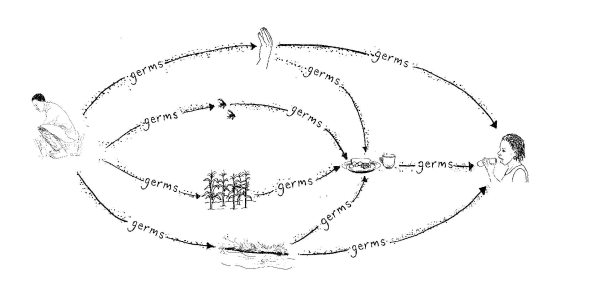 |
| Sometimes it is easier to remember the ways germs travel by showing that they are all words beginning with the letter "F": fingers, flies, fields, foods, and fluids (water). |
|
© The Hesperian Foundation
|
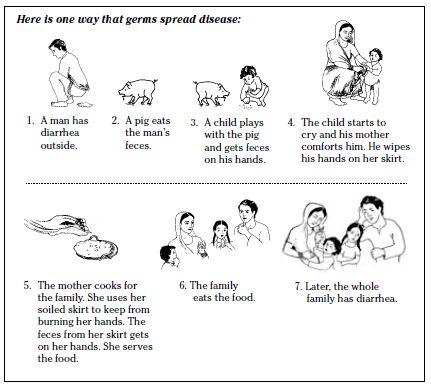 |
| How germs spread |
|
© The Hesparian Sanitation
|
What could have prevented the family's illness?The spread of illness could have been prevented:
|
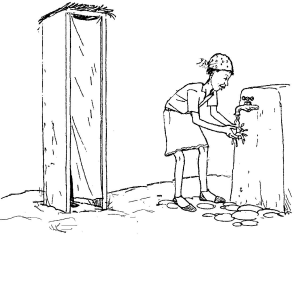 |
| Important: washing hands |
|
© The Hesparian Sanitation
|
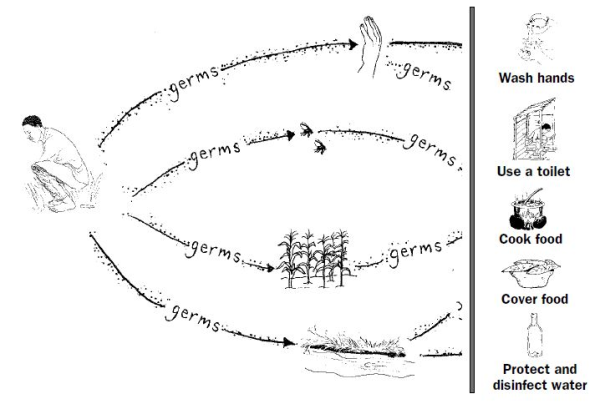 |
| Ways to prevent spread of germs and worms |
|
© The Hesparian Sanitation
|
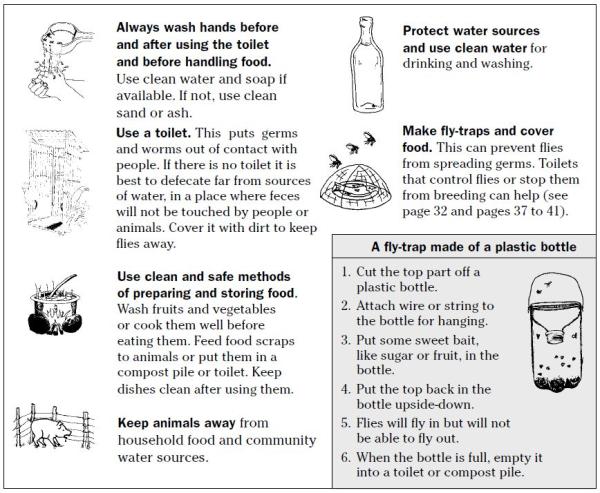 |
| Homestead hygeine |
|
© The Hesparian Sanitation
|
Bladder and kidney infections
Causes of bladder infections
|
Germs can enter the urinary opening and cause infection when a woman:
|
 |
|
A girl or woman of any age - even a small baby - can get an infection of her urine system. |
|
© The Hesparian Sanitation
|
Signs and treatmentSigns of bladder or urinary tract infection include:
If you have signs of a bladder infection, start drinking plenty of water to help flush out germs. If a bladder infection goes untreated, it can worsen and infect your kidneys. If the signs last more than 2 days, you may need medicines.
|
|
|
| Woman drinking water |
|
© The Hesparian Sanitation
|
|
Signs of kidney infection include:
Kidney infections are more serious than bladder infections because the kidney can get so sick that it stops working. While plenty of water, herbal remedies, or sulfa drugs usually cure a urinary tract infection, a kidney infection often needs more treatment. If you have the signs of a kidney infection, see a health worker right away.
|
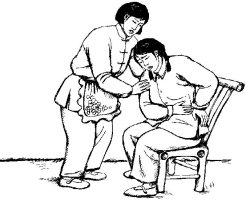 |
| Woman feeling unwell |
|
© The Hesparian Sanitation
|
Diarrhea and dehydration
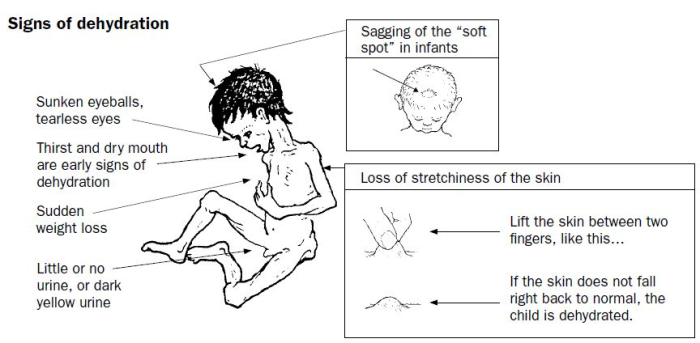 |
| Signs of dehydration |
|
© The Hesparian Sanitation
|
Note for the health worker
To stop dehydration
 |
| Rehydration drink |
|
© The Hesparian Sanitation
|
| WARNING: If dehydration gets worse or other danger signs appear, get medical help. |
Information Source Links
- Sanitation and Cleanliness for a Healthy Environment - The Hesperian Foundation in collaboration with the United Nations Development Programme (2005). The Hesperian Foundation

